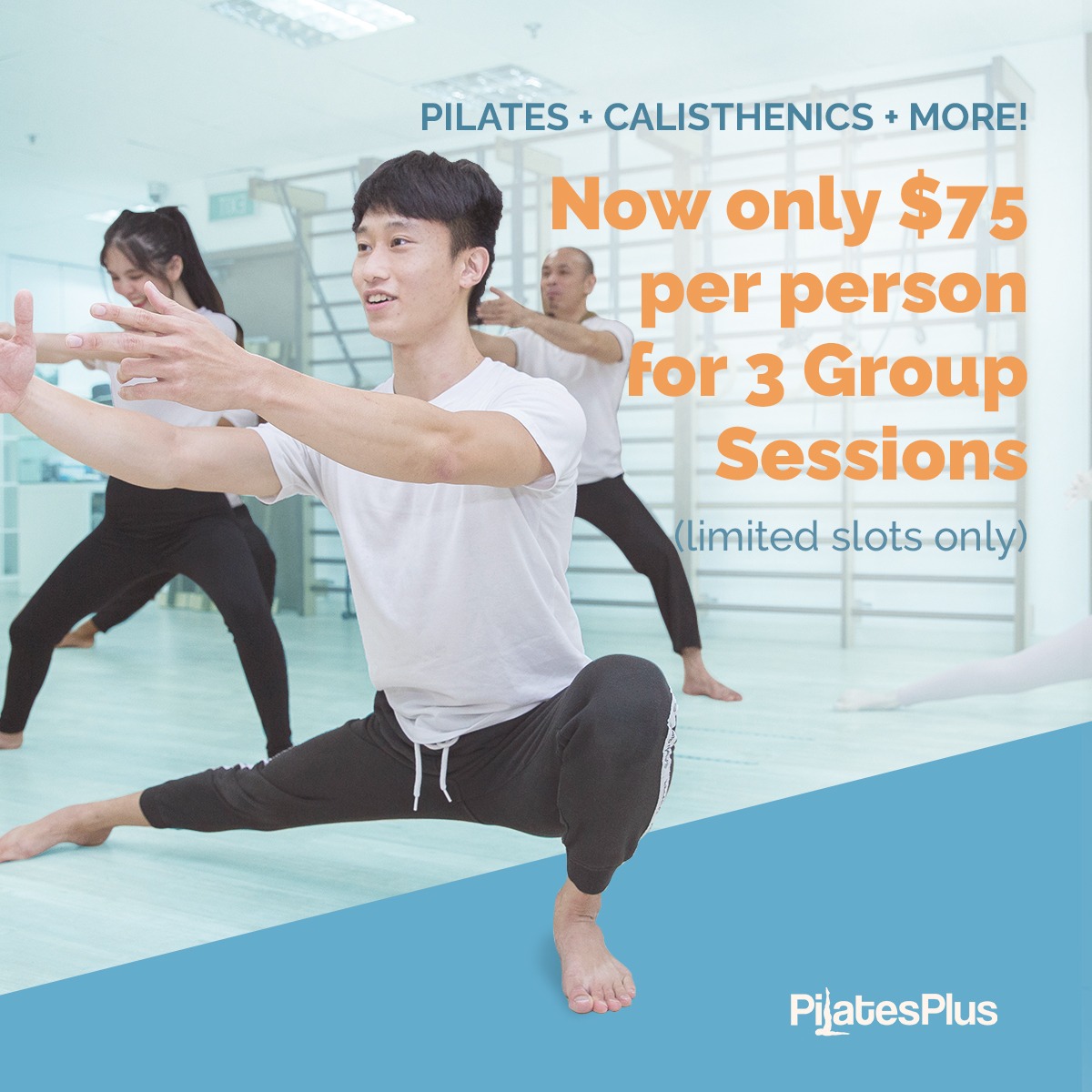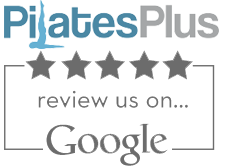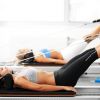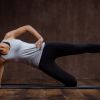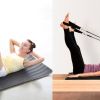Gym vs. Pilates: Which is Better for You? Direct Comparison!

Working out in the gym was the most common way of getting fit 20 years ago until different training methods have arisen in the fitness industry. One of which is the Pilates method which has gained popularity not just to the regular fitness enthusiast but also from people who want to work their posture to high-level athletes who want to improve their performance.
Pilates training offers more advantages than gym training. It works on your strength, flexibility, cardiovascular fitness, and breathing in one session which makes it more efficient compared to going to the gym. The low-impact nature of Pilates training is very suitable for beginners or those recovering from injuries.
I would highly recommend Pilates training to anyone, especially if you are just getting started, but sometimes, it boils down to your personal preference. You may want to sit down and review your goals first before deciding. Below are some items that you may want to consider as I compare both gym and pilates training side by side.
Gym vs. Pilates: Which is more convenient?
If your routine revolves around gym training, regardless if you are an advanced practitioner or a beginner, you will need to go to a gym to do your exercises.
To do a Pilates session, you can choose to go to a big fitness center that offers Pilates classes, to a boutique Pilates studio to attend more specialized Pilates training, or you can do it on your own anywhere.
Winner: Pilates
Pilates training will be a winner for convenience and consistency as you can do it anywhere without depending on any equipment, as long as you have already learned the basic exercises for you to do safely. A good comprehensive YouTube channel that teaches Pilates can guide you with your own training.
How does your session go in the Gym or Pilates?
Exercising in the gym is pretty straightforward; you go in and start your workout. Most likely, you will warm up on the treadmill, lift some weights, do your core training, maybe do more cardio workouts, stretch; then you’re done. This can be done at your own pace, which is quite convenient. You can either finish it in 30 minutes or 2 hours.
In a Pilates class, you will be guided by the teacher all throughout the session. You don’t need to decide which exercise to do next. The session will be from 45 to 60 minutes long. It will consist of an easy warm-up and a full-body routine which includes stretching, strength work, and breathing exercises.
Winner: Tie, depends on your preference
If you want independence in our training, the gym will be good for you. If you prefer guidance the whole time, Pilates classes will be a good option.
Gym vs. Pilates: What type of exercises do you do?
Depending on what your goals are, what machine is available, or your experience in working out, gym training can be very varied. In general, the exercises in the gym can be categorized into five types:
- Cardio workout
- Strength training with weights
- Bodyweight exercise
- Core training
- Flexibility training
Exercises in the gym can either be targeted to specific body parts (isolation training) or a compound exercise that works the whole body or several body parts at one time.
In a Pilates session, to simplify it, you only do Pilates exercises. Though there are several hundreds of Pilates exercises that you can do, most of these exercises are a combination of strength work, flexibility, and breathing. It is very rare to find a Pilates exercise done in isolation to work a certain body part. In addition to this, the Pilates method is focused on doing the movement with precision, so your form and overall body awareness will improve by time.
Winner: Pilates
Pilates exercises are more efficient in terms of time and effectiveness as you are working more than one component at a time. Not only that you are able to work on multiple body parts, but also you are also improving your breathing, flexibility, and strength.
Gym experience vs. Pilates experience
Both Pilates and Gym can have varied experiences depending on where you go, which class you are doing, your fitness level, your preference for training, and the Pilates teacher teaching you.
Winner: Tie – you have to figure this out yourself.

Which is better for flexibility? Gym or Pilates?
If you know how to stretch correctly and still have some time after your cardio workout and weight training, you can improve your flexibility in the gym.
Pilates exercises, by nature, have a built-in flexibility element in them; at any point, you are doing a Pilates movement, you are always somewhat working to be more flexible.
Winner: Pilates
Timewise, it is very efficient to work on your flexibility when doing Pilates exercises.

Gym vs. Pilates for weight loss
The variety of exercises that you can do in the gym and your control of the intensity and duration of your training can be a big factor in your weight loss goal. You can always log in more time on the treadmill to burn more calories or do more reps on exercises that are effective for weight loss.
On the other hand, Pilates will be limited to Pilates exercises that can still be effective for weight loss. The intensity and the variety of the exercises that you can choose from will be dependent on the class you are attending. And it is always limited to an hour per session which will limit the calories you can burn.
Winner: Gym training
Working out in the gym is superior to losing weight compared to just Pilates training only.
Gym vs. Pilates for cardiovascular fitness
In the gym, you can work on your cardiovascular fitness in many ways:
- Working on the treadmill, elliptical trainer, rowing machine, and other types of equipment specific for a cardiovascular workout.
- You can do circuit type training with weights or bodyweight training which is also effective for your aerobic fitness.
In a Pilates class, the exercises are done non-stop, which will challenge your cardiovascular fitness. It can be very effective if the class you are attending is suited to your level, but you’ll be short-changed if you are too advanced for the class.
Winner: Gym training
Gym workouts just offer you more variety and control to work on your cardiovascular fitness, so it is definitely a winner here, but Pilates sessions come close with this one.
Equipment comparison between gym and Pilates
We all know that there is a lot of equipment that we use when working out in the gym. We will name the most popular ones here and what do we use them for.
Treadmill, stationary bikes, stair climber, elliptical trainer, etc. – Machines to work on your cardiovascular fitness.

Dumbbells and barbells for strength training.

Squat racks and multistation strength machines for strength training

Pull-up bars, and dip stations for bodyweight exercises.

The pilates method offers unique equipment only specific to Pilates exercises. You can find these pieces of equipment in a Full Pilates Studio that has experienced Pilates teachers to guide you on how to use these machines.
Pilates mat – Pilates exercises can be done on the floor but it will be more comfortable to do it on the mat. Most prefer a thicker mat of up to 15 mm as it offers more cushion as you move on it. Learning Pilates mat exercises will give you the freedom to do the exercise anywhere. Here is an article I wrote about the benefits of Pilates mat exercises.

Pilates Reformer – one of the most popular Pilates equipment. It has a moving carriage that is attached on the frame by springs and a pair of straps that is connected to the carriage via a pulley on the other end of the frame. You can do a full-body workout on the Pilates reformer.
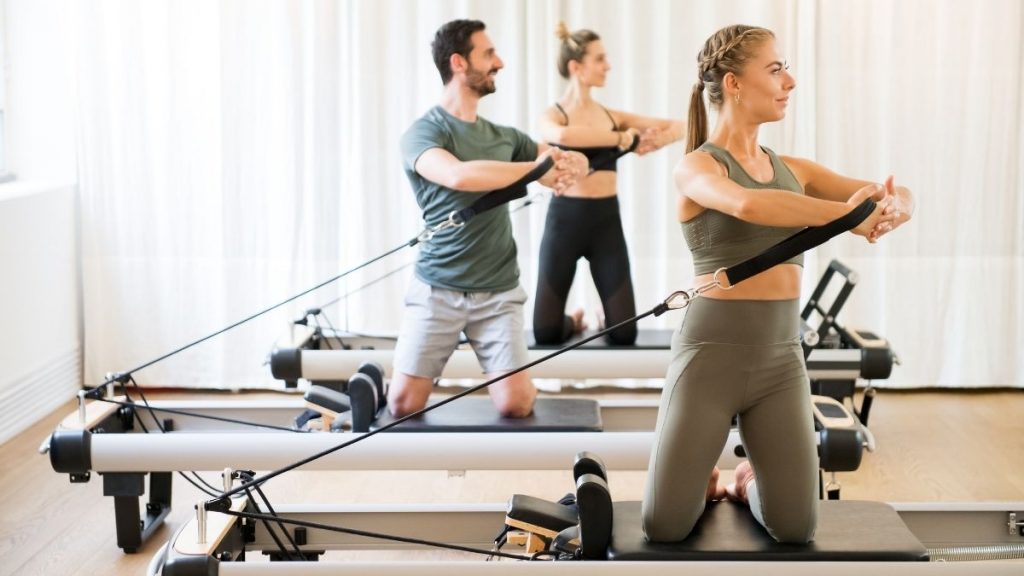
Wunda Chair – is like a chair with pedals attached to it via springs. A full-body workout can be done on this machine but it has a limited variation that works the upper body compared to the Pilates reformer.

High barrel – is a barrel and a ladder combined together. This equipment is perfect for lower body stretches and core training.

Spine corrector – a piece of portable Pilates equipment that is very effective to work on your spine articulation and core exercises.

Cadillac – this equipment can offer you a wide variety of exercises. It resembles a hospital bed with a stainless frame around it. Springs and trapeze can be used to make the exercises easier or harder. The Cadillac is widely used for rehabilitation in Pilates practice.

Winner: No winner here in terms of equipment as it is more of your personal preference. The only drawback for Pilates equipment is you will always need a Pilates instructor for you to use it as it has more complex functions.
What is the difference between gym and Pilates after a workout?
Gym training will most likely give you the typical “pumped up” sensation and maybe some soreness the next day. These sensations can be the gauge of how successful your workout is.
In Pilates, you will generally feel light and tall after the session. You will have that feeling of you have worked out some muscles that were never there before. You can still be sore with your core the next day but not as much as an intense gym workout will do.
Winner: In my opinion, I will give Pilates an edge over this one but gym training comes very close as I sometimes long for that soreness where you know that you have done a good workout the previous day.
Gym vs. Pilates: How will you look after a consistent training?
Gym training will most likely give you a more muscular look. Though this will still depend on your exercise selection.
In Pilates training, getting bulky will not be a possibility. You will look leaner, taller, and just nicely toned as a result.
Winner: I will let you decide on this one. It’s a personal preference.
Gym vs. Pilates: Who should be doing it?
Everyone should be doing either gym or Pilates. The only differentiator here is if you are a real beginner or you have some injuries, Pilates might be a good starting point to do build a good foundation.
Gym vs. Pilates for injuries
It is going to be risky if you are injured and you are doing gym training on your own. You may need the guidance of a personal trainer with rehabilitation experience.
You can attend Pilates classes if your injury is mild, but I would highly recommend taking one-on-one training with a Pilates teacher with rehabilitation experience as this will help you do the exercises properly to prevent any risk of reinjuring yourself.
Winner: Pilates
The precision, breathing, attention to detail, and low-impact nature of the practice make Pilates training more suitable to people with injuries or to those who have already recovered and want to go back to their regular fitness training.
Gym vs. Pilates for Athletic performance
Athletes at a higher level are generally strong with good cardiovascular fitness. And if not, it is part of their training to go to the gym to work on these aspects of their fitness.
So Pilates will be a perfect addition to their training as it will correct imbalances in their body and at the same time, it will increase body awareness which will give them the edge to perform better.
Winner: Gym and Pilates are necessary for an athlete to optimize their performance.
Hope this article helped you make the right decision on which route you want to take.



